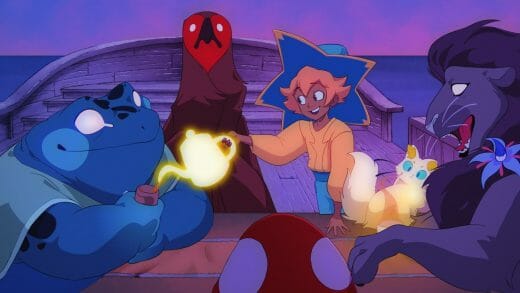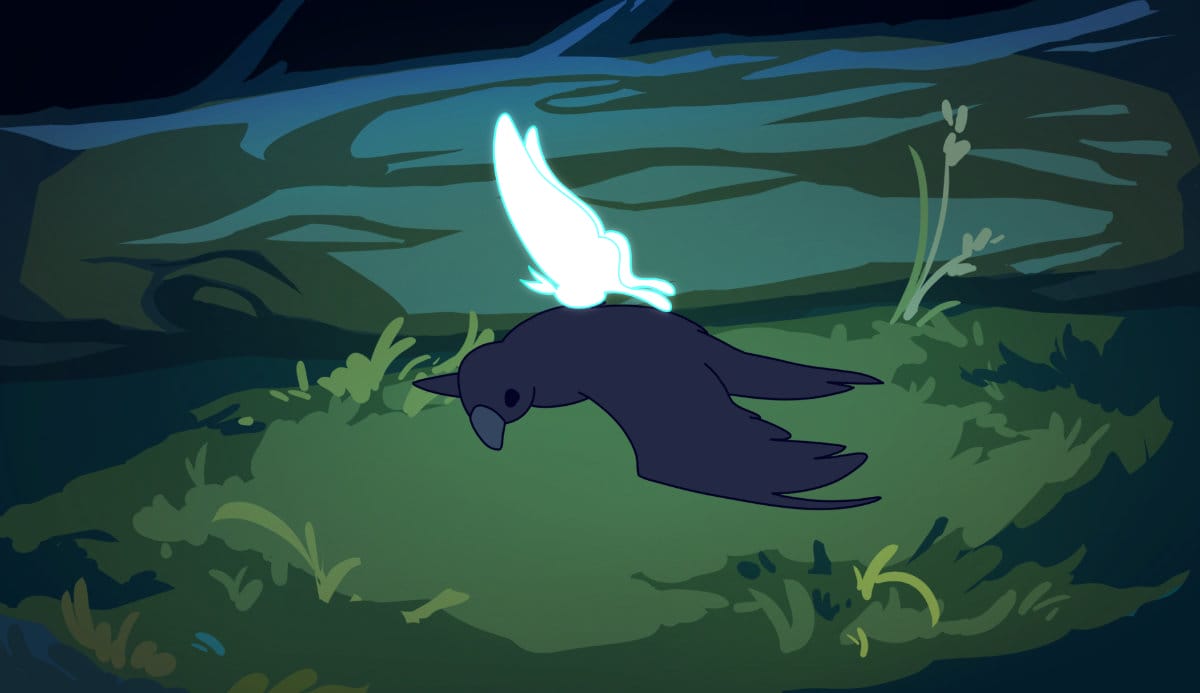
Camren Missimer’s student film Midnight Chrysalis begins with a crow dying in a clearing in a dark forest. A white moth touches the crow, sending glowing wisps into the night. Fairies of all kinds are drawn to the crow: a beetle-like fairy emerges from a tree trunk, while an amphibious fairy swims out of a pond and hops towards the wisps. The fairies meet in the clearing to watch as one of their kind is born, emerging from the crow’s carcass.
Midnight Chrysalis was Camren’s first student film, completed in a single semester during their second year at Rochester Institute of Technology’s School of Film and Animation. The film is currently in the festival circuit, but Missimer plans on sharing it online in the future. We had the chance to chat with Camren about planning and creating one’s first film, Harmony’s animation pipeline, and the importance of self care as an artist.
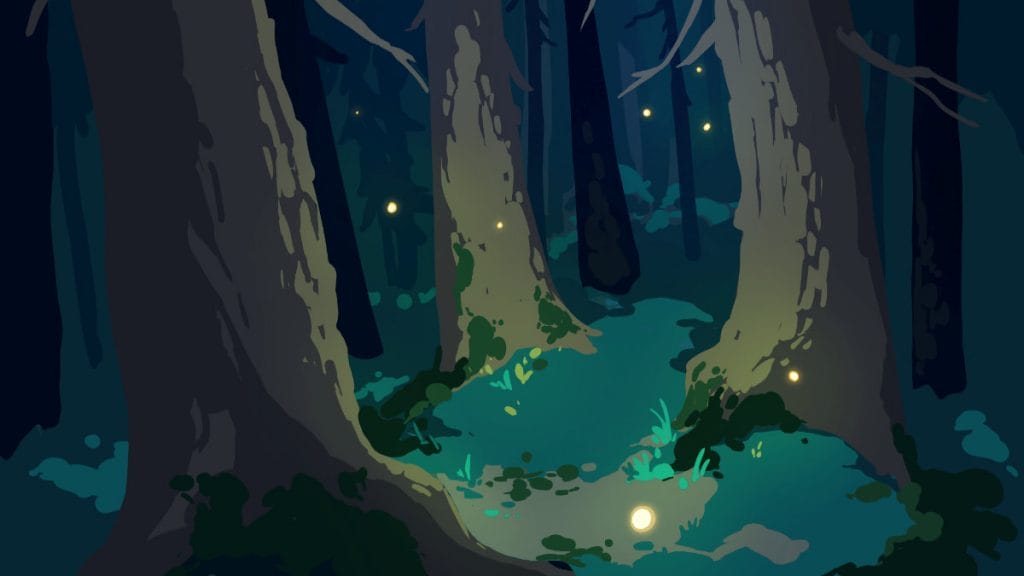
What inspired you to make a fantasy short for your first film?
Camren: Since it was my first film, I wanted to be as self-indulgent as possible, because I wasn’t sure about the process yet and I wanted to make sure I could maintain motivation for it. And I really love fantasy. I have loved fairies since I was little, but I wanted to bring my own spin to it and have it be a little bit darker and have less of a fairytale vibe to it. I took everything that I was interested in at the time and shoved it into a film.
One of the other things that led to the film being what it was is that I wasn’t super-confident in my ability to draw backgrounds when I was in first year. So I spent a lot of time over the summer practicing – specifically, drawing forests. And so, I decided, since that was what I was the most confident in, that the story should be set in a forest so that I could focus more on the animation, which was what I was really interested in.
Is that part of why the short is set at night? Did the darkness of the forest allow for simpler backgrounds?
Camren: I set the short at night because it seemed the most logical to give it a moody feeling. I didn’t want it to be a very cutesy sort of thing. I mean, it’s a bit cutesy.
But that actually being a logistical challenge for me. Previously, when I had practiced painting backgrounds, they were all set in the day. So I struggled a bit to figure out how to get something dark while still having things visible, and not having it feel threatening, but more mysterious.
I ended up doing a couple of background tests at the beginning of the semester and sending them to people for feedback.
Were there other contributors on the project, or were you expected to do everything from start to finish?
Camren: I worked with a composer [June Westfield] who did an amazing job. I love her work so much. And then pretty much the rest of the production process, I did all myself. I had a couple of friends help me out with coloring, but all of the backgrounds and the story, the animation, the cleanup, was done by me.
That’s one of the reasons student films are so cool: you go through the whole pipeline.
Camren: It was really interesting. And I did feel I learned a lot from having to go through every step of the process. It’s also a good way to find out the areas that you’re more interested in doing professionally versus what is a necessity that you have to have for a finished film.
Which aspects of production particularly interested you?
Camren: I knew going in that I was the most interested in the animation. And that’s what I ended up enjoying the most. Although cleanup definitely takes a while, and after a certain point in the semester, it becomes a little bit of a slog.
I really enjoyed the animation aspect. I wanted to push myself to try animating a variety of different character designs and thinking about how the different types of fairies would move through the forest. So that was really interesting to me.
Some people have commented on the backgrounds being super cool, but I didn’t actually enjoy that process too much. It was more something that I had to do. But it was interesting trying to figure out how to make the backgrounds contribute to the story overall.
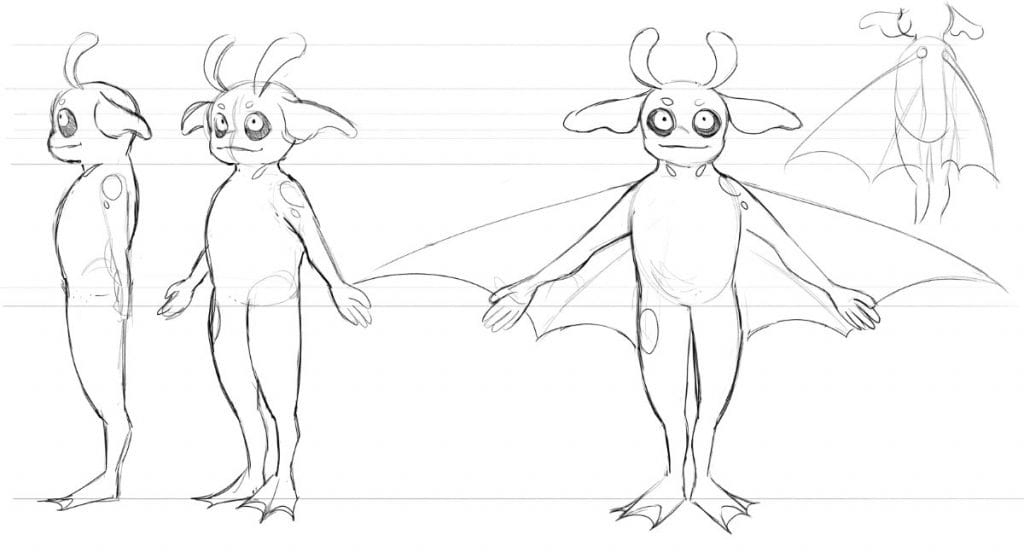
The characters really do stand out. I personally really like the aquatic fairy that swims through the water and then flies out. I had never considered what an aquatic fairy would look like.
Camren: That one’s my favourite. One of the concepts in the film that I was excited to explore was how a fairy would be born. I decided that they would be born from a dying animal. And that if they were born from a dying animal, they should take on some of the traits of that animal.
So for the aquatic one, it was a frog. And then for some others, there was a grasshopper and a beetle, and then of course the crow for the main fairy. It was really fun coming up with those designs and what influences they would take from those animals while still being able to be read as fairies.
That’s an awesome piece of implied worldbuilding! What did the planning stage for this project look like?
Camren: Given that it’s a semester film, we have a very short production schedule. We have to have our story solidified in the first three or four weeks. Or else we’re going to end up really struggling down the line.
I’d actually been thinking about this story for the entire semester beforehand. Not doing a whole lot of formal pre-production, but just deciding the overall mood that I wanted and events to take place.
Generally, I consider myself a person that struggles with story. So I found that really helpful. And then, going into the class, I was able to just present my concept with confidence. I got a few critiques that really helped to bring it together, but overall the concept didn’t change much from start to finish.
What was it like creating the story of Midnight Chrysalis?
Camren: I found it helpful to use logistical constraints to help me figure it out. I knew I wanted to keep it under a minute and a half, and I knew I wanted it to be set in the forest and involve fairies in a kind of darker fantasy tone. So I started trying to brainstorm some sort of event that was not very plot-heavy that I could communicate quickly.
Actually, I used to read some of the Toon Boom interviews when I was a younger student and I thought they were really cool. I remember one animator, Curie Lu, mentioned that she just wanted her film to be eye-candy.
So I went with that and approached the story thinking it just needs to depict some sort of simplistic event that I can elaborate on by having it happen really slowly and atmospherically.
It definitely does focus on a single key moment. Everybody anticipates this one event, and then we see how it unfolds.
Camren: Yeah. I remember when I was first pitching the story, I was worried that people would think that it was a little too fast or that not enough happens. I pitched it as, “A fairy’s going to be born, and then it’s born. And that’s it.”
But it was really fun elaborating on that and figuring out the visuals. I really like elaborating on one small concept. I think that’s cool.
Is that the kind of work you’d like to focus on when you enter the industry? More character-based work?
Camren: Really, my main goal for going into the animation industry is that I want to be an animator. I really love animation. So exploring that one, singular moment was a way for me to approach storytelling.
But I think, in the end, I really enjoy taking a concept and figuring out how to execute it in a way that’s interesting. So I want to be a freelance 2D animator or potentially working in-house at a studio.
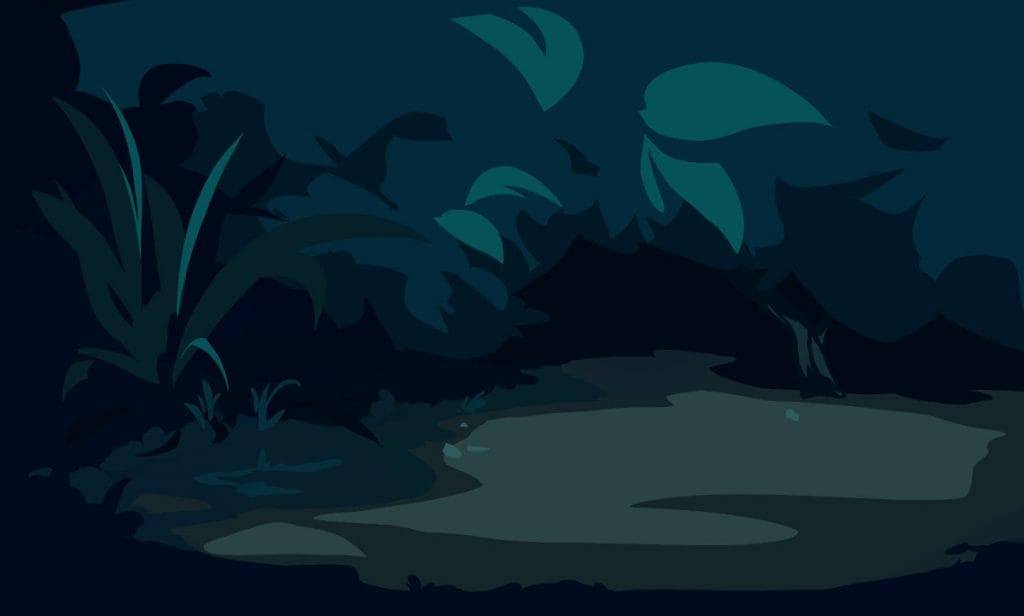
What techniques and programs did you use for the making of Midnight Chrysalis?
Camren: I used Toon Boom Harmony for a massive amount of it. I used Krita for the backgrounds, but the style of backgrounds made it very easy to draw in additional assets in Harmony and have it blend in. I did all my compositing in Toon Boom Harmony as well. So I found that helped me speed up the production process a lot. Just having everything in that one file was really nice.
There are so many cool features that I learned about that Harmony has, that I was able to use. One of the logistical issues I had to solve was that I wanted wisps to be in the film. They were introduced in the third shot and then I realized I had to have those in almost every other shot. So I made a couple of little wisps and then I was able to reuse those assets in every scene. If I needed more of them, I could just offset the timing a little bit so that they didn’t feel too copy-pasted, as well as adjusting the spacing and the movement of it with animation pegs. That was really cool.
I also tried to play around with the camera tool and the different effects it could create. There are a couple of shots where I used Z-space, moving different layers of the background in and out of Z-space, so that when the camera moves, it creates a parallax effect.
There’s also the ‘Apply to All Frames’ button, which professors tell you to be really careful with because it can mess a lot of things up. But I did think it was really helpful. Because there were some shots where just a couple of wisps that I hand-animated. Or the moth in the first couple of shots, where it’s just one solid colour. So I could just hit ‘Apply to All Frames’ and I could colour the entire shot in a couple of seconds. Which was really nice, not having to do all that by hand.
The final shot, viewing the newly born fairy through the reflection of the crow’s eye, was probably the most complex compositing-wise. I messed around with some gradients and opacity nodes to get that look of the reflection, as well as blurring some of the background elements for depth. I had to tweak it a lot, but using the Node View really helped to make that effect of the last shot.
It’s a really cool software, and I’m constantly learning new things about it.
What challenges came up during the production process?
Camren: One is definitely the production schedule. It is very short. And so burnout is definitely an issue. I figured out that semester how to take better care of myself. Even though I did end up getting a bit burned out in the middle, I was able to recover and not suffer too much.
I also had some exporting issues. There were certain file quality limitations for the final export, and I had used a lot of gradients, so there ended up being some crunching there and some artifacts that were not present in the initial files. That was a little frustrating. But I was able to submit a higher-quality file for film festivals submissions, so I got over it.
It was also my first time cleaning up so many shots. I had done a little bit of cleanup the previous semester to get a feel for it, but that was definitely the longest part of the production process. It was a big learning experience for me. A little frustrating at times.
I am pretty happy with how it came out. Since making that film, I’ve been working on ways to have a stronger shape language, as well as working more efficiently and having more expressive animation, while still having it look very clean.
Before that semester, I did not know if I was able to make a film in such a short timeframe, or make a film at all. Towards the end of the process, I was amazed. I was like, “Wow! I did that!” I wasn’t sure that I could.
You learn so much in just one semester, such a short timeframe, making a huge project. By the end there’s inevitably going to be a lot of things that you’re kind of unhappy with, or you think you could do better. But then you can take that and move it to the next project.
How would you describe the reaction to Midnight Chrysalis so far?
Camren: I haven’t had the chance to attend any film festivals. It’s gotten into a couple so far, but I haven’t been able to travel to see them. It was screened at the end of the year with the rest of my classmates’ films, and I have gotten a lot of comments of people being impressed with it. It’s been very validating for the work that I put into it.
I am really excited to eventually post it online and see what people think, although at the point when I post it, I may cringe a little bit because I know how to do things better. But I am hoping that it’ll still be cool for people to see.
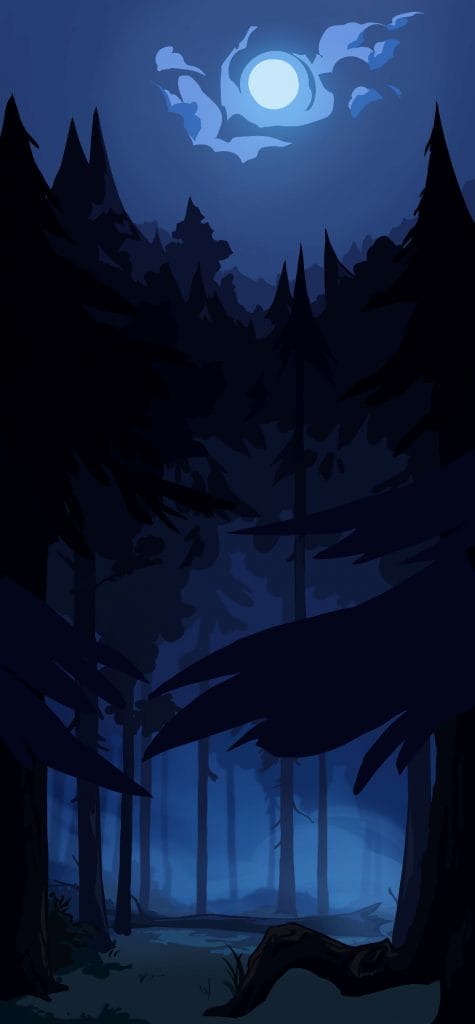
What do you hope to work on in future projects?
Camren: I am making another semester-long film currently. I’m smack in the middle of production for that. I am enjoying the process, and I’m excited to see how it turns out in the end.
Then we have a semester-long break, then go into a year-long thesis film. I’m excited to prioritize more animation, because that’s the skill I want to develop the most. And I’m actually planning on working on a couple of classmates’ thesis films in the semester break that I get from working on my own stuff. It’s going to be an interesting change of pace, working on someone else’s story.
Do you have any advice for students planning their own first films?
Camren: One of the biggest things I would say is definitely figure out how to take care of yourself. Getting burned out on a long project is always kind of inevitable, but if you’re taking care of yourself, then you’ll be able to bounce back a lot quicker. It’s better to scale back the work that you’re doing but still be making consistent progress. It’s easy to get behind and then panic and be unmotivated.
I would also say don’t be afraid to reach out to professors or classmates about ideas that you’re unsure about, or concepts that you know you struggle with. It’s really helpful to know that you struggle with things, because then there are things you can do about it. You can find online resources, or you can ask professors during office hours. That is massively helpful.
Also, keeping your idea simple is really important, keeping it short. For our first film it was suggested to keep it under a minute and a half, kind of like what CalArts students tend to do. Limiting myself to that kept the film feasible within the production timeline.
And always scale down your ideas. It’s easy to come up with some complex lore for a character and then realize that you need to take more time to explain that.
Keep things simple and manageable for yourself. Then you can really focus on the couple of aspects that are there, and make them really good. This will enable you to make more complicated things later using what you’ve learned.
- To see more of Camren Missimer’s daily sketches, follow them on Instagram. Camren hopes to share more animation and information about their films in the near future.
- Working towards your own thesis film? Students may be eligible for up to 84% off licenses for Harmony and Storyboard Pro.


